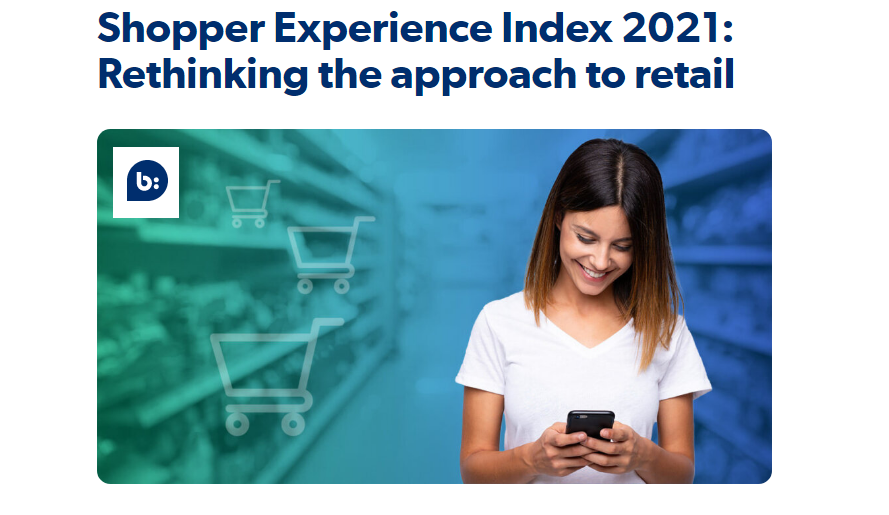Almost a quarter (23%) of UK shoppers are now using social media to discover new products, making it apparent that social commerce, rich visual content and virtual storefronts are the future of any ecommerce strategy.
The Bazaarvoice’s annual Shopper Experience Index finds that:
- Social selling: A third (33%) of UK consumers are also making purchases directly via social media – making it more popular compared to other European countries
- Feedback from fellow consumers: over a third (37%) of Brits won’t go through with a purchase on a brand or retailer website if there is no user generated content available – nearly half (48%) look on product pages specifically for customer photos
- Diminishing high-street demand: Less than half (45%) of UK consumers would choose in-store shopping over online, if they could only choose one method of shopping for the next year
- Own labels preferred: Almost half (49%) of UK shoppers having made an own-label purchase in the past year, with 41% of shoppers intentionally purchase own-label products, whether due to preference (50%) or price (49%)
The global report explores how consumer shopping preferences and behaviour are rapidly evolving (largely due to the effects of COVID-19), and how businesses should adapt to these trends. Key findings for the United Kingdom include:
Digital shopping isn’t replacing brick-and-mortar, but it is surpassing it. Most shoppers want a mix: At present, 60% of respondents globally have adjusted how often they shop in-store. In the UK specifically, 31% of shoppers have reduced their in-store trips, 18% are only going in for essentials, and 21% are not shopping in-store at all right now.
This has driven growth in digital shopping and the Bazaarvoice Network of over 11,500 brands and retailers has seen online orders increase 39% year-over-year in 2020 globally. However, some shoppers aren’t willing to give up brick and mortar shopping just yet; 45% of UK respondents would still prefer to go in person if they could only choose one method of shopping for the next year (rising to nearly 54% globally).
Social commerce has gone mainstream: Almost a quarter (23%) of UK shoppers now use social media to discover new products to buy. With the ability to shop on mobile at home, it’s no surprise that over 1 in 3 global shoppers have made a purchase on social media in the past year. When broken down by age, that number climbs to 43% of 18-24-year-olds and 47% of 25-34-year-olds. Purchasing directly through social media is more popular in the UK (33%) compared to other European countries, such as France (28%) or Germany (30%).
As this trend is only set to increase, there’s opportunity for brands to utilise what customers share about their brand on social media across other marketing channels. When shopping on a brand or retailer’s website, well over a third (37%) of UK shoppers won’t purchase if there isn’t UGC available – such as reviews and photos – on the product page they’re on. Equally, nearly half (48%) look on product pages specifically for customer photos, followed by other websites where the product is sold (37%) and search engines (35%).
Product sampling is helping to replace the in-store experience: 44% of UK respondents say shopping at a brick-and-mortar store is how they feel most connected to the brands they love, and almost half (47%) say what they value most about an in-store shopping experience is the ability to touch, see, and try on products. With non-essential retail stores still closed in the UK, brands need to meet customers where they are – at home. Product sampling is the perfect solution. When asked, 87% of UK respondents like the idea of receiving free samples, while over half (51%) are willing to write a review of the free products they’ve received, and 28% say they’ll even post on social media.
In a survey of the Influenster community of members who have received a sampling box from Bazaarvoice, 63% say they’ve purchased the products they sampled again, and of those who had purchased, 97% purchased at least one additional product from the brand because they loved the first product so much. Shoppers appreciate sampling because it gives them the in-store experience of physically interacting with a product that they crave, but from the safety of their own home.
Own-labels are becoming preferred by shoppers: In the past year, almost half (49%) of UK shoppers have made an own-label purchase. The top reason for doing so was liking the product (50%), followed by the product being cheaper (49%). Grocery is the most popular vertical that shoppers will buy own-label (48%), followed by home goods (37%) and beauty (36%).
While 41% of shoppers intentionally purchase own-label products, demand has also been driven by product availability – almost two thirds (63%) of UK shoppers reported product shortages during the pandemic. With opportunity for retailers to win new customers through own-labels, retailers must ensure that UGC is available for these products to give consumers confidence to choose them.
“The pandemic has accelerated shopping trends that were already in motion at the start of last year,” said Ed Hill, SVP EMEA at Bazaarvoice. “More UK shoppers are turning to e-commerce than ever before but shoppers still value the ability to touch and feel products which is typically difficult to replicate online.”
Hill concludes, “Brands and retailers can use rich, visual content online to create experiences where shoppers feel they truly trust and understand the product they are buying. Customer videos, images and reviews are one of the most effective ways to achieve this. Enhancing the online experience with authentic user generated content means other shoppers have the confidence to buy.”
Methodology
The report is based on data from over 11,500 brand and retailer websites in the Bazaarvoice Network, Bazaarvoice’s Influenster community of more than six million members, and a global survey of more than 6,000 consumers.
To view the global report, visit The Shopper Experience Index.

